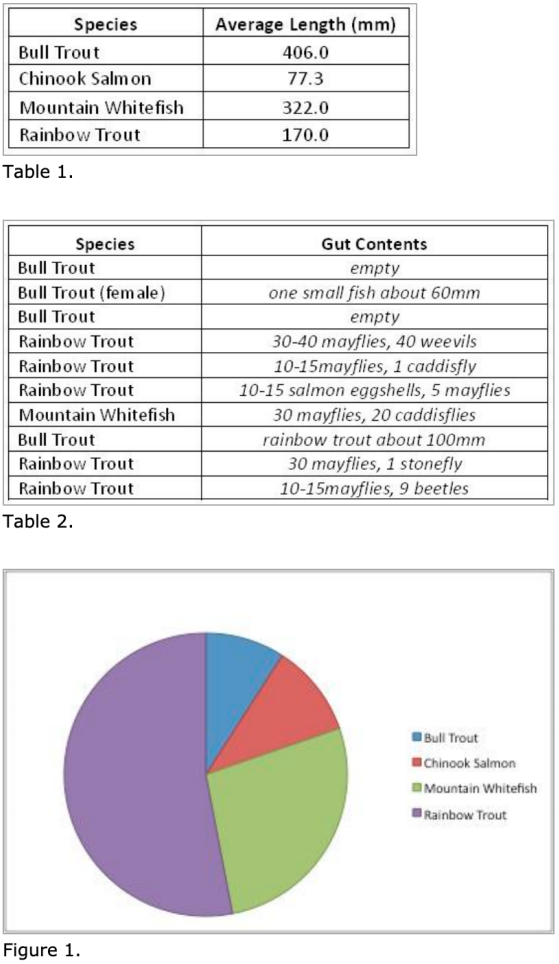It is hard to believe that anything other than the brilliant turquoise blue of the Chilko-Chilcotin River would be able to capture a rafter's attention before the major confluence with the Fraser River. However, the appearance of Big Creek entering the river with its crystal clear water is simply breathtaking. This major tributary is a high-powered stream which cascades over boulders and cobbles along it's course. We were excited to sample the drainage upon arrival and discovered a particular assemblage of fish. The oxygen rich water and complex series of riffle, pool, and run habitat throughout the system supports a variety of fish with fusiform body shapes.
Bull trout, Chinook salmon, longnose dace, mountain whitefish, and rainbow trout were all present. The stream proved difficult to seine due to the high velocity of the water but we were able to sample efficiently by hook and line. We were able to perform gut content lavage on a few of the species of fish and observed an interesting food web. Evidently each species of fish specialized on different organisms for subsistence. The bull trout were largest in size on average and resided at the top of the food web, feeding on small fish. We discovered a few presumed 60-100mm rainbow trout or Chinook salmon in the bull trout that we sampled. The rainbow trout we examined were largely feeding on small mayflies, with quantities ranging from 15-40, although stoneflies, beetles, and weevils were also found. Furthermore, one particular rainbow trout was found with 15 salmon eggshells, which suggests the spawning chinook salmon in the creek provide an additional food source during the summer through the fall. We also observed one Chinook salmon carcass in the water. On the other hand, the mountain whitefish fed on caddisflies in addition to the small mayflies. The caddisflies were larger in size compared to the mayflies and it was interesting to note that the mountain whitefish were larger on average than the rainbow trout in our analyses. The juvenile Chinook salmon and longnose dace were too small to examine for gut content analysis.

